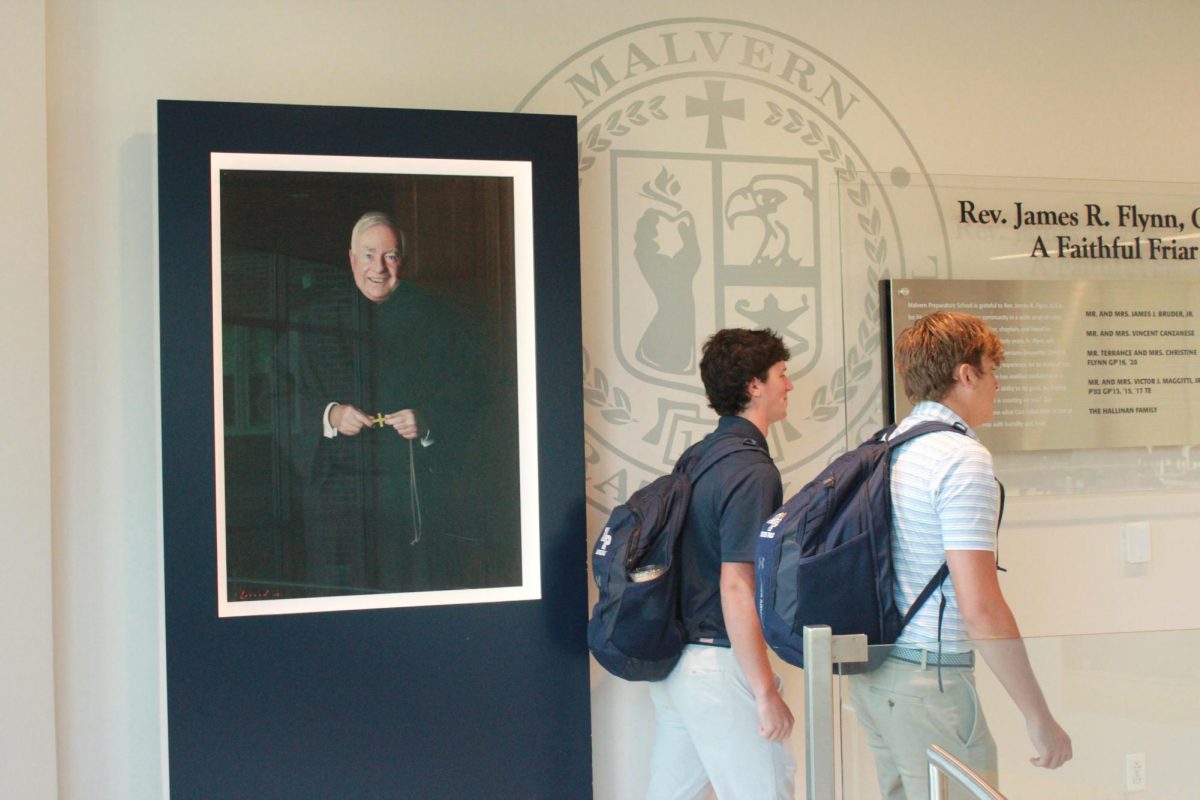Algeo will focus on student leadership and Sillup will focus on academics.

Patrick Ferraiolo ’17, Tommy Pero ’17, Jack McClatchy ’17
On March 21st, incoming Head of School Fr. Don Reilly, O.S.A. notified the Malvern community via email and an announcement in the Malvern Weekly that there would be a shift in the school’s leadership structure for the upcoming school year.
Starting after the end of this school year, current Upper School Head Mr. Ron Algeo will serve as the Assistant Head of School for Student Leadership, and current Middle School Head Mr. Pat Sillup will serve as the Assistant Head of School for Academics.
Both Sillup’s and Algeo’s new roles will oversee grades six through twelve.
“Given that we need to invest even more in the organizational structure and support for this continued evolution, I felt it important to solidify academic leadership before my arrival in July,” Reilly wrote in the letter. “The new organizational structure supports our evolution and also unites the Middle and Upper School divisions.”
[perfectpullquote align=”right” cite=”” link=”” color=”” class=”” size=””]“The new organizational structure supports our evolution and also unites the Middle and Upper School divisions.”
-Fr. Don Reilly[/perfectpullquote]
According to the letter, anything concerning student activities and orientation, athletics, school counseling, discipline and Christian Service will fall under Algeo’s domain. Oversight of faculty, curriculum, college counseling, academy teams across all grades and information technology will fall under Sillup’s domain.
On November 29, the school announced that Fr. Reilly will replace Mr. Christian Talbot as Head of School effective July 1. Reilly has been meeting with Malvern faculty and staff at least once a week since the announcement of his upcoming new role as Head of School.
“Ever since January, he has been coming in on most Fridays, and meeting with different constituents,” Head of School Mr. Ron Algeo said. “And one of the meetings he has when he is here is with Mr. Sillup and me.”
This idea came from Father Reilly, in an attempt to combine the Upper School and Middle School to a more unified setting, according to Algeo.
“He knew the positions we were in, and he wanted to help us and the school put together an organizational design that would help support what we are doing,” Algeo said.
[perfectpullquote align=”left” cite=”” link=”” color=”” class=”” size=””]“There’s some sense of everything has changed. I think a lot of things have remained the same. Mr. Algeo and I are still in positions to try to impact your learning through teacher education, through improving programs, through improving opportunities. That hasn’t shifted.”
-Mr. Patrick Sillup[/perfectpullquote]
When the idea was first pitched, Father Reilly was open to feedback, and encouraged changes to be made so that everyone benefited from this transitions, according to Algeo. He wanted this to be a cultivation of all the new ideas Malvern has encapsulated within the last few years.
“He gave Mr. Sillup and me tons of opportunities to react to it and make some changes,” Algeo said. “This was done in junction with all the other work we are doing with the grade level teams.”
This new idea of having two leaders side by side overseeing the entire school seemed a little drastic at first, due to the time and complexity of the roles– but after taking a closer look, it was not only doable, it was an ideal plan.
“When Father Reilly first posed this idea of having two leaders side-by-side that run grades six through twelve, it was really different for me,” Algeo said. “I spend so much time working with the Upper School, how am I going to do the Upper School and the Middle School? But as Mr. Sillup and I were thinking about it, we realized that our time is not going to change, but our focus will.”
Sillup said that while he and Mr. Algeo’s titles have changed, nothing major in practice will change.
“There’s some sense of everything has changed. I think a lot of things have remained the same,” he said. “Mr. Algeo and I are still in positions to try to impact your learning through teacher education, through improving programs, through improving opportunities. That hasn’t shifted.”
There are two things going on in a student’s life at school everyday: academics and the activities outside the classroom. In the eyes of the administration, these aspects of student experience are seen as equal, and both need to be correctly covered for the overall benefit of the school.
“How you develop as a person, as a leader, outside the classroom is just as important as inside the classroom,” Algeo said. “This is a development of student leadership.”
Sillup started his main involvement with the upper school this year has been through helping to design the ninth grade academy, but he said he’s not a stranger to how the upper school works.
“It’s not like I’m coming in cold saying, ‘I have no idea what happens in grades ten through twelve,” he said. “I guess the biggest shift for [upper school students] is that you’ll just see me more. You’d get to know me.”
Sillup said he likes that the restructured positions are more narrow. He thinks students will better know to whom they should reach out.
“I think that if you guys could come to me for an academics perspective, I think that’s a good thing. And you know that’s where I can point to,” he said, “and you know you can go to Mr. Algeo from a student leadership perspective that encompasses everything from when I think about the play, when I think about arts, to athletics, to Christian Service— you’re talking a lot of opportunities you guys have well beyond the school day that also need to be thought about pretty deliberately.”
Algeo thinks the change in leadership structure may not be tangible or visible to students. “From the students’ perspective, it does not change your day to day,” Algeo said. “You will not notice the difference, really.”
However, a main area of focus for both Algeo and Sillup is student feedback, which will rely heavily on the feedback of students, teachers, and parents.
“How do we get that feedback back to the students so that they could say ‘Wow, what I am doing is working– I need to continue to do this’ or if I get feedback that something is off, how do I change course a little bit to get better,” Algeo said.
Sillup stressed that student’s opinions are crucial to the Malvern’s changes moving forward.
“I think that student reactions, student feedback, student input— it’s going to have to be an essential focus to this entire shifting,” he said.
Senior Jimmy Dugan has mixed feelings about the change.
“[The change] allows each head to put much more time into their respective areas of expertise, rather than balancing both academics and extracurricular,” Dugan said. “My only concern is that each head has to deal with everyone at Malvern, since they are the heads of sixth through twelfth.”
“I definitely feel that middle and high school should be set apart and not molded together,” Dugan said.













